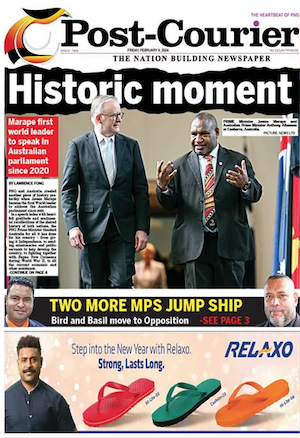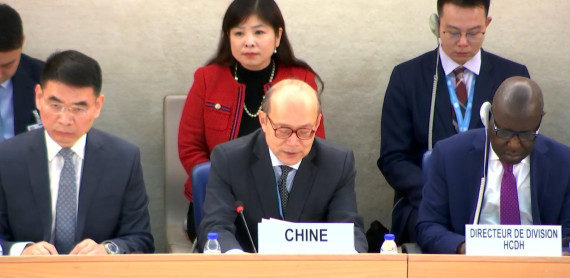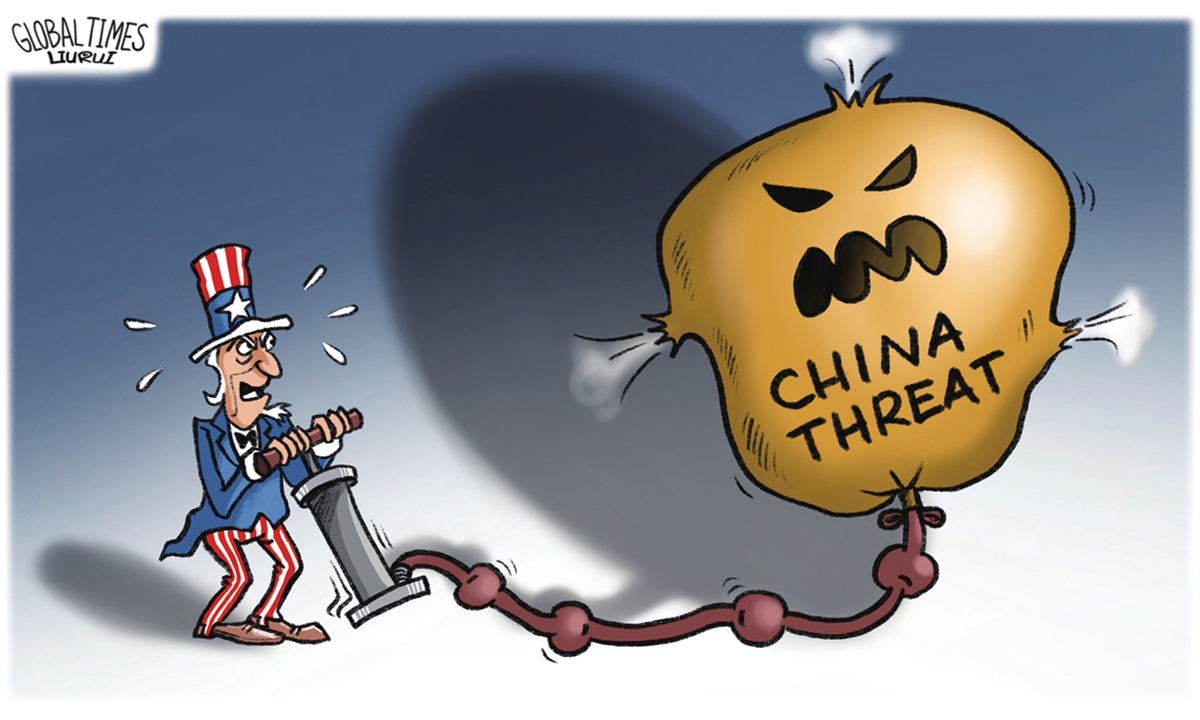Domestic and international terrorism have caused havoc in several nations. Each nation exhibits a unique approach to combatting terrorism; each nation exhibits a unique outcome from its approach. Examining types, causes, approaches, and outcomes of wars on terrorism in four nations — United States, Israel, China, and Russia — discloses successful strategies, self-destructive strategies, and strategies that deceive the public and terrorize others with impunity. The words “terrorist” and “terrorism” are not always allied; terrorist actions are not always due to terrorists.
Depending on perspective, the word “terrorism” ─ the unlawful use of violence or threats to intimidate or coerce a civilian population or government ─ can be falsely labeled and falsely applied. Those who exhaust peaceful protests against oppression and provocation lash out at their oppressor and inflict damage on the civilian population that keeps the oppressor in power. Not understanding the origins of terrorism and the reasons it is committed have unfavorably skewed the responses and led to more terrorism.
United States
United States administrations exhibited a strange method for repelling terrorists — let them enter an area, establish themselves, become strong, and commit atrocities, and then attack them — the spider approach. Muhammad Atta and his eighteen partners freely entered the United States, studied how to go up and not come down, and did their dirty deeds.
After facing several terrorist situations during the 1990s, the September 11, 2001 bombings compelled the United States government to wage a War on Terrorism. The U.S. government used one strategy to respond to terrorism ─ brute force.
Twenty-three years after the 9/11 attack the U.S. breathes easier, no terrorism on its mainland, and the major terrorist organizations — al Qaeda and ISIS — decimated. From appearances, the U.S. applied an effective counter-terrorism strategy and contained terrorism. Not quite. U.S. strategy expanded terrorism and moved terrorism into parts of Africa. The reduction in terrorism came mainly from the efforts of other nations.
By blending its battles against terrorism with preservation of American global interests, the U.S. initially expanded terrorism. The battles to overcome terrorism evolved into conflagrations in Afghanistan and Iraq; the former beginning and ending with undefined meaning and the latter having no relation to terrorism.
U.S. assistance to Pakistan intelligence during the Soviet/Afghan war indirectly supplied weapons to Osama bin Laden, financed his activities, and helped create the al-Qaeda network.
U.S. manufacture of terrorists continued during Clinton’s administration. Battles between U.S. and Somali forces weakened Somali leadership. From an imposed anarchy in Somalia, al-Shabaab eventually emerged. In 2023, the militant group continues its violent insurgency in Somalia.
The U.S. invasion of Afghanistan succeeded in moving bin Laden from a grim and arduous perch in a rugged and isolated mountain to a comfortable villa in Pakistan, from where he was eventually captured and killed. Other than that accomplishment, the 20-year incursion into Taliban territory accomplished nothing positive — the Taliban returned to power and, thanks to the U.S. counter-terrorism strategy, other terrorist groups operate within its boundaries. In August 2022, the U.S. government located al-Qaeda leader Aimen al-Zawahiri residing in Kabul and killed him in a drone strike.
By invading and occupying Iraq, the U.S. extended the battle against terrorism rather than confining it. Except for Ansar al-Islam, a northern radical Islamic group close to the Iran border, Saddam Hussein’s Iraq contained no Al-Qaeda affiliated elements. After the U.S. invasion destroyed the Iraqi armed forces and policing functions, Al Qaeda members moved into Iraq from Pakistan and formed ‘Al-Qaeda in Iraq’ (AQI ).
AQI was responsible for its downfall. Sunni tribes revolted at al-Qaeda’s indiscriminate violence and the “Iraqi surge,” with assistance from U.S. troops, inflicted heavy losses on the al-Qaeda organization. Stability returned to Iraq until the Islamic State of Iraq and Syria (ISIS), under the leadership of Abu Bakr al-Baghdadi, emerged from the remnants of AQI, and took advantage of growing resistance to U.S. troops in Iraq and discontent with Bashar al-Assad’s Syria. Baghdadi formed a force that captured about a third of Syria and 40 percent of Iraq, including the cities of Raqqa and Mosul.
Islamic State of Iraq and Syria
Contributed by Sémhur, Flappiefh – Own work from Near East topographic map-blank.svg by Sémhur ; data from the New York Times.
President Barack Obama and his administration share blame for the creation of ISIS, allowing its recruitment throughout the world, not preventing recruits from entering Syria, its rapid capture of territory, and expansion into a caliphate. Former President Donald Trump exaggerated the claim that his administration was the primary force in defeating ISIS. U.S. airpower, which killed too many civilians and was not always welcome, helped; other groups liberated the ISIS dominated areas.
· Syrian Democratic Forces (SDF), mainly composed of Kurdish Popular Protection Units (YPG) militia, backed by U.S. airpower, liberated Raqqa.
· Forces loyal to Syrian President Bashar al-Assad, backed by Russian airpower, recaptured Aleppo.
· Iraqi soldiers, Kurdish Peshmerga fighters, Sunni Arab tribesmen, and Shia militiamen, assisted by US-led coalition warplanes, drove ISIS from Mosul.
Amnesty international lists 1,600+ civilians dead from the war in Raqqa and between 9,000 to 11,000 civilians killed in the battle for Mosul, mostly from U.S. air attacks. Foreign Policy estimates that “8,000 buildings were destroyed or heavily damaged in Mosul’s Old City. Include other parts of the city where the battle raged and the estimates of buildings damaged or destroyed are as high as 138,000.”
The irony of Trump’s Trumpism is his assassination of a person responsible for ISIS’ defeat, Iranian Major General Qassim Soleimani. The U.S. contributed to ISIS’ initial successes by training an inept Iraqi army that fled Mosul and left the city to a small contingent of ISIS forces that equipped itself with captured weapons. Showing no will and expertise to fight, Iraq’s debilitated military permitted ISIS to rapidly expand and conquer Tikrit and other cities. The disasters energized Iraq’s Popular Mobilization Force (PMF). With cooperation from Iran and leadership from Major General Qassim Soleimani, the PMF recaptured Tikrit and Ramadi, pushed ISIS out of Fallujah, and eventually played a role in ISIS’ defeat at Mosul. Instead of receiving praise for his efforts, Major General Qassim Soleimani, who was never responsible for any terrorist activity, was eliminated as an arch-terrorist. Who committed the terrorism in his death? Israel’s PM, Benjamin Netanyahu dropped out of the joint assassination plan at the last minute and left President Chump holding the bag.
NATO, with the U.S. providing air force and ballistic missile support, played the decisive role in overthrowing Moammar Gadhafi, a leader who constrained Radical Islam and its terrorist activities. Militants from Libya flowed east, through friendly Turkey into Syria and Iraq, and added to ISIS ranks. Weapons captured from Gadhafi’s stockpiles flowed west to equip al-Qaeda in the Islamic Maghreb (AQIM). AQIM led the 2013 attack on a gas facility in southern Algeria; individuals trained in Libya attacked tourists at beaches and museums in Tunisia; and Boko Haram spread havoc throughout northern Nigeria.
Another defect in U.S. strategy ─ Osama bin Laden left no doubt that America’s unqualified support of Israel provided terrorists with a reason to augment its ranks.
During the 1990s, two documents,”Declaration of War against the Americans Occupying the Land of the Two Holy Places” and the “Declaration of the World Islamic Front,” retrieved from Osama bin Laden, jihad, and the sources of international terrorism, J. M. B. Porter, Indiana International & Comparative Law Review, provide additional information on bin-Laden’s attachment of his terrorist responses to Zionist activities.
[T]he people of Islam have suffered from aggression, iniquity, and injustice imposed on them by the Zionist/Crusader alliance … Their blood was spilled in Palestine and Iraq. The horrifying pictures of the massacre of Qana, in Lebanon, are still fresh in our memory.
So now they come to annihilate . . . this people and to humiliate their Muslim neighbors. … if the Americans’ aims behind these wars are religious and economic, the aim is also to serve the Jews’ petty state and divert attention from its occupation of Jerusalem and murder of Muslims there. The best proof of this is their eagerness to destroy Iraq, the strongest neighboring Arab state, and their endeavor to fragment all the states of the region such as Iraq, Saudi Arabia, Egypt, and Sudan into paper statelets and through their disunion and weakness to guarantee Israel’s survival and the continuation of the brutal crusade occupation of the Peninsula
From Pakistan, through Egypt to North Africa and Nigeria, and South to Somalia and Kenya, al-Qaeda, Daish, and a multitude of terrorist organizations perform daily bombings, killings, and insurrections, a result of policies of all U.S. administrations since the “gipper” assumed the presidential office.
Israel
Israelis have been victims of many terrorist attacks; few of these attacks have been performed by terrorists. The great magnitude has been done by Palestinians who had exhausted the means to overcome their oppression. To express their oppression and popularize their cause, they have lashed out at their oppressor and inflicted damage on the civilian population that keeps the oppressor in power. The terrorist actions are mostly revenge attacks due to provocations, succeeding Israeli military and civilian terror attacks on innocent Palestinian civilians.
Depicting Israel as a nation that has suffered excessive terrorism is a mischaracterization. More correct is that by magnitudes more than any nation, not even close, Israel is the major terrorist nation in the world. Look at the record. In almost every country of the world, apartheid Israel has committed terrorist actions.
Begin with the 1948-49 war against the Palestinians. From Wikipedia:
According to several historians, between 10 and 70 massacres occurred during the 1948 war. According to Benny Morris the Yishuv (or later Israeli) soldiers killed roughly 800 Arab civilians and prisoners of war in 24 massacres. Aryeh Yizthaki lists 10 major massacres with more than 50 victims each.
The newly established Israeli government continued its aggression against the Palestinians by terrorizing Palestinian communities, ethnically cleansing 1.1 million Palestinians, and forcing them into displaced persons and refugee camps.
Israel followed the ethnic cleansing by instituting apartheid and continually terrorizing West Bank and Gazan Palestinians with provocative terror attacks.
Gaza before Oct. 7-Courtesy of ABC News
Gaza after Oct. 7-Courtesy of Aljazeera
Going beyond its borders, Israel drove the PLO out of Lebanon and used terror attacks on the Lebanese population.
Going worldwide, Israel uses its intelligence service, Mossad, to assassinate foreign scientists, military hardware suppliers, Palestinian activists, and those who harmed Israelis.
Israel displays a dual strategy in the war on terrorism. Building walls to separate Israel from the West Bank and Gaza, restricting travel between Israel and its occupied territories, scrutinizing entry at checkpoints, and cleverly surveilling all Palestinians have prevented terrorism within Israel. Provoking Palestinians into committing terrorist acts and stimulating settlers to make revenge “price tag” attacks against Palestinian communities and the military to wage war against the terrorists is the other side of the coin.
The violence committed against the Palestinians emits a backlash from worldwide supporters of the Palestinians and causes harm to Jews. The backlash is converted into spurious charges of anti-Semitism and used to justify Israel’s actions.
Add it up and Israel is an apartheid country, the world’s foremost sponsor of terrorism, and planner of the genocide of the Palestinian people, a triple combination that no nation in all history has been able to equal. The Israeli government and its worldwide public relations machine convince the world it is an innocent victim of Hezbollah terrorists, Hamas terrorists, anti-Semites, surviving Nazis, liberal misfits, and disoriented people who cannot get out of the way of bullets and bombs. Western governments pay no heed to the triple play.
Russian Federation
A reported 1,312 terrorist attacks caused 1,179 Russian deaths between 2007 and 2021 and gripped the Russian Federation. After peaking in 2009, attacks and deaths in Russia consistently declined to only one attack and two deaths in 2021. Three of the major attacks happened when Chechen insurgents attacked apartment buildings in Moscow in September 1999, killing 200 people and injuring several hundred; on October 23, 2002, when Chechen insurgents attacked the Dubrovka Theater in Moscow and an estimated 129 people were killed during the rescue operation, and during September 1–3, 2004, when Chechen and Ingush insurgents attacked a school in Beslan, North Ossetia, and held more than 1,100 hostages. A careless rescue operation caused more than 300 deaths, including 186 children.
Terrorism arose from a combination of extremist ethno-nationalist and Islamist militants from North Caucasus’s republics of Chechnya, Dagestan, Ingushetia, and Kabardino-Balkariya. The dual nature of terrorism ─ people seeking more autonomy and extremists seeking more Islam complicated the Kremlin’s strategy to combat terrorism.
In retaliation for Chechnya terrorist attacks in Moscow, Russian troops invaded the Republic of Chechnya, a name whose roll from the lips has an endearing quality. Massive and indiscriminate bombings of cities and villages that caused high civilian casualties, herding of people into camps, extra-judicial killings, torture, and disappearances occurred from both sides and made it difficult to ascertain, who were the ‘good guys’ and who were the ‘bad guys.’ Which side was more guilty of terrorism?
Vladimir Putin registered his name, ruthlessness, pragmatism, and authority by resolving the Chechnya terror crisis. He followed Abraham Lincoln’s pattern of using force and making friends with the enemy. Putin convinced Akhmad Kadyrov, Chief Mufti of the Chechen Republic of Ichkeria in the 1990s, to switch sides. Kadyrov later became the President of the Chechen Republic. Grozny has been rebuilt and Chechnya exists on multi-billion-dollar subsidies from Moscow.
Grozny
Recognizing that Islamist insurgents in the North Caucasus were loosely allied with al-Qaeda’s network and many traveled to Syria and Iraq to join the Islamic State, the Russian president realized that joining Syria in its civil war against ISIS was a means of preventing the Islamic extremists from extending their reach. Decimating the central authorities of the terrorist campaigns would subdue the morale and incentives of the al-Qaeda “look-alikes” on Russian soil. Without having to use Russian ground troops, and air force pilots not facing challenges in the sky, support of the be-sieged al-Assad regime was a “win-win proposition for Moscow. Putin’s strategy to combat terrorism has been successful — ISIS and al-Qaeda are mostly gone from the Arab lands of the Middle East (still in Syria, Afghanistan, and Africa) and the Russian Federation has had no terrorist attacks in the last two years.
China
A shadowy and shifting group of Uyghur separatists is responsible for terrorism committed against Chinese authorities and citizens. Incomplete statistics from The State Council Information Office of the People’s Republic of China show that “from 1990 to the end of 2016, separatist, terrorist, and extremist forces launched thousands of attacks in Xinjiang, killing large numbers of innocent people and hundreds of police officers, and causing immeasurable damage to property.” From 1990 to 2001 the Eastern Turkistan Islamic Movement, which proposes the establishment of a fundamentalist Muslim state, “was responsible for over 200 acts of terrorism, resulting in at least 162 deaths and 440 injuries.”
Two of the reported and more serious terrorist attacks.
On May 22, 2014, five terrorists drove two SUVs through the fence of the morning fair of North Park Road of Saybagh District, Urumqi, into the crowd and detonated a bomb that claimed the lives of 39 and left 94 injured.
On 1 March 2014, a group of 8 knife-wielding terrorists attacked passengers in the Kunming Railway Station in Kunming, Yunnan, China, killing 31 people, and wounding 143 others. The attackers pulled out long-bladed knives and stabbed and slashed passengers at random.
A more complete description of the terrorist attacks is available in an article by The State Council Information Office of the People’s Republic of China.
As the terrorist attacks rose, Beijing had one strategy ─ ruthlessly seek out the perpetrators. “In the period 2013–2017 police arrested 330,918 in the province, 7.3 percent of total arrests in China. This compares to 81,443 arrests in the previous five years. In March 2019, Chinese officials said that they had arrested more than 13,000 militants in Xinjiang since 2014.”
Realizing their strategy had developed into a “tit-for-tat” operation, where each blow against the terrorist apparatus was countered by a blow against Chinese, the Chinese government changed its strategy. In 2014, China launched the Strike Hard Campaign Against Violent Terrorism in Xinjiang and combined the use of force with initiatives that integrated the Uyghur populations into Chinese society and improved their standard of living. The new strategy has been successful — no reported terror attacks in recent years, the GDP of a stagnant Xinjiang province increased from 963 billion yuan in 2016 to 1,774 billion yuan in 2022, and the unemployment rate decreased from 2.48 percent to 2.04 percent during the same interval.
While Western media accuses China of destroying mosques, the Xinjiang Islamic Association states, “There are some 24,400 mosques in Xinjiang. Many in the region were built in the 1980s and 1990s or earlier, but some of these mud-and-brick structures (ED: the demolished Kargilik’s Grand Mosque was a mud-and-brick structure) or small buildings were not well maintained or repaired. They became unsafe for religious activities and posed a serious threat in the event of an earthquake. The mosques were also inadequately designed, making worship difficult.”
Kashgar’s Id Kah Mosque
Before Renovation
After Renovation
Conclusion
Terrorism’s principal strategy is to inflict pain, pain, and more pain on a civilian population until the civilian population’s government agrees to their demands. Governments may care but always place national interests above that of the local population. The struggle to overcome terrorism has had two principal strategies
(1) Give ‘em nothing and fight them until the death, and
(2) Use force to keep terrorism contained and offer benefits that will satisfy some grievances and lower the temperature until the heat becomes normal.
The United States pursued the ‘fight until death’ strategy. After excessive deaths from the ongoing terrorism and civilians caught in the battles, the U.S. appears to have won the war; terrorism in the Middle East has declined to an acceptable level.
Israel has pursued a strategy of “we can outdo all terrorist attacks by being more terrorist than the terrorists.” Pushing the oppressed Palestinians into terrorist attacks enables Israel to respond tenfold to the attack on its populace. Terrorizing opposition in other nations is neatly performed by false charges of anti-Semitism, cyber attacks, and, when necessary, Mossad hitmen.
Russia went from ‘fight until death’ to offering the leaders of domestic terrorism a good bribe and letting them take care of it. Total force was used against international terrorism. Both strategies have been successful.
China departed from brute force to a more conciliatory strategy that recognized the wants of the Uyghurs and devised plans to satisfy the population. Most successful of all of the strategies.
Each nation that confronts terrorism may have unique characteristics that shape the terrorism and the response to it. This investigation shows that Chinese President Xi-Jinping eventually realized the exact nature of the terrorism his country was experiencing and accepted a plan that quickly solved the problem. Russian President Vladimir Putin also was pragmatic and changed his stance as events unfolded. Soon afterward, Russia had no more terrorism.
For Israel, terrorism is part of the daily diet. Israel commits terrorism, Israel invites terrorism, Israel commits terrorism, Invites terrorism, on and on until there will be none.
The United States invited terrorism by helping Pakistan’s intelligence fortify Osama bin Laden, not listening to the al-Qaeda leader’s grievances, and invading Iraq. In 1998, bin Laden demanded the expulsion of all American soldiers from the Arabian Peninsula and voiced objections to a U.S. foreign policy that armed Israel. Did U.S. troops need a base in Saudi Arabia? Why has the U.S. had close ties with the apartheid country, which is the world’s foremost sponsor of terrorism, and planner of the genocide of the Palestinian people? Assuredly, the date 9/11 would just be another day on the calendar if U.S. administrations understood the origins of terrorism and the reasons it is committed.
















 A Chinese man flykicks Messi’s head off a poster. Don’t believe what the media say, Messi is NOT wanted in Hong Kong!
A Chinese man flykicks Messi’s head off a poster. Don’t believe what the media say, Messi is NOT wanted in Hong Kong! 














